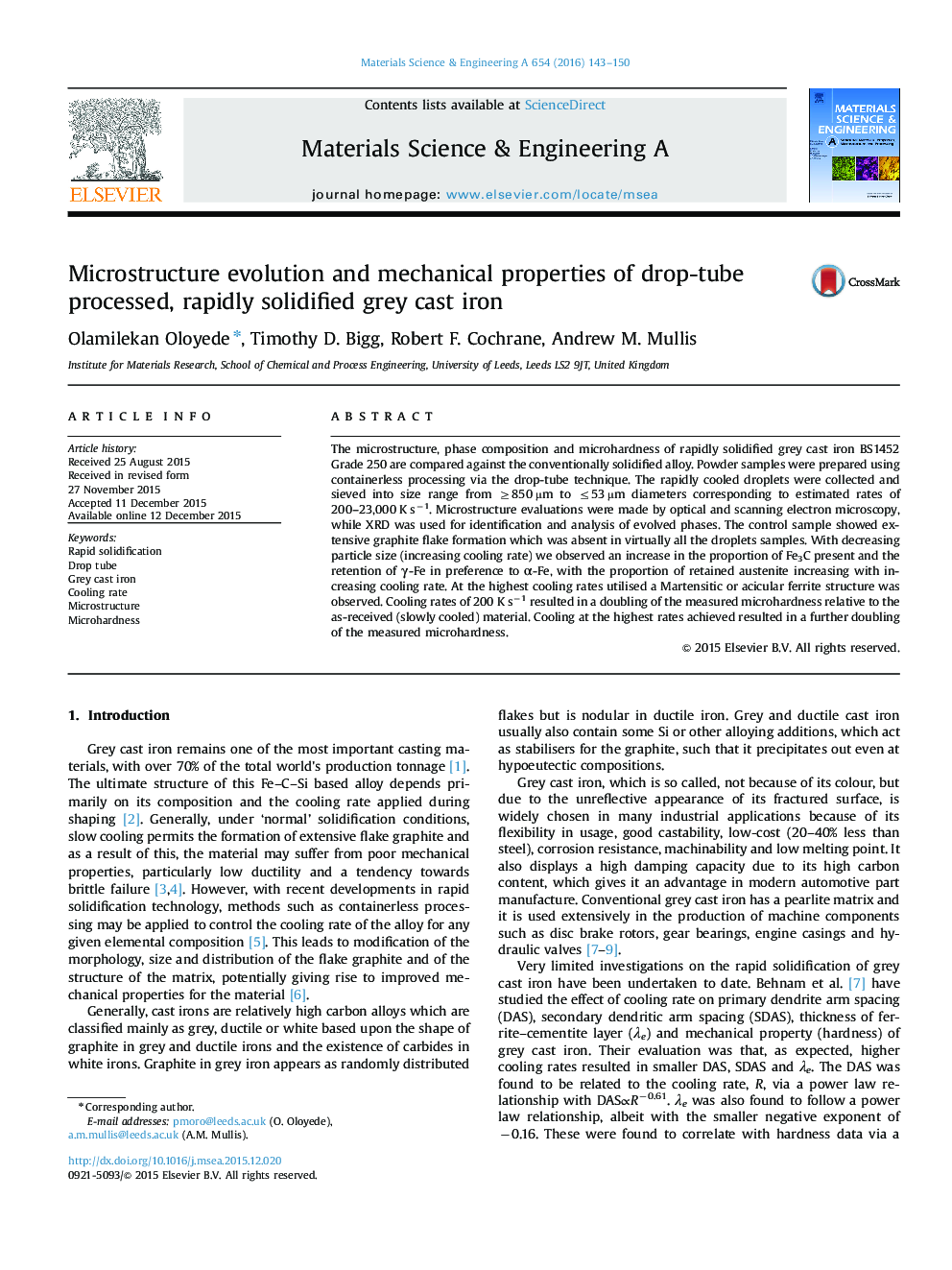| Article ID | Journal | Published Year | Pages | File Type |
|---|---|---|---|---|
| 7975609 | Materials Science and Engineering: A | 2016 | 8 Pages |
Abstract
The microstructure, phase composition and microhardness of rapidly solidified grey cast iron BS1452 Grade 250 are compared against the conventionally solidified alloy. Powder samples were prepared using containerless processing via the drop-tube technique. The rapidly cooled droplets were collected and sieved into size range from â¥850 µm to â¤53 µm diameters corresponding to estimated rates of 200-23,000 K sâ1. Microstructure evaluations were made by optical and scanning electron microscopy, while XRD was used for identification and analysis of evolved phases. The control sample showed extensive graphite flake formation which was absent in virtually all the droplets samples. With decreasing particle size (increasing cooling rate) we observed an increase in the proportion of Fe3C present and the retention of γ-Fe in preference to α-Fe, with the proportion of retained austenite increasing with increasing cooling rate. At the highest cooling rates utilised a Martensitic or acicular ferrite structure was observed. Cooling rates of 200 K sâ1 resulted in a doubling of the measured microhardness relative to the as-received (slowly cooled) material. Cooling at the highest rates achieved resulted in a further doubling of the measured microhardness.
Related Topics
Physical Sciences and Engineering
Materials Science
Materials Science (General)
Authors
Olamilekan Oloyede, Timothy D. Bigg, Robert F. Cochrane, Andrew M. Mullis,
